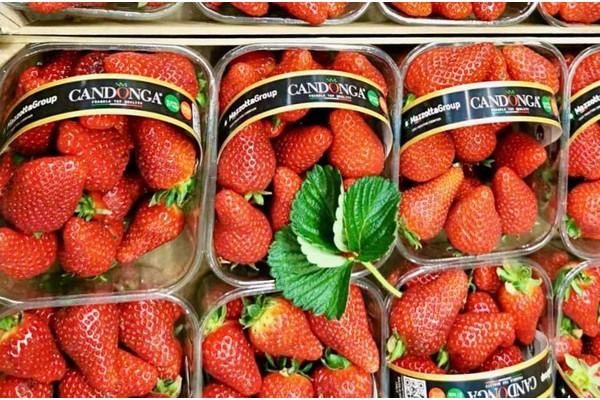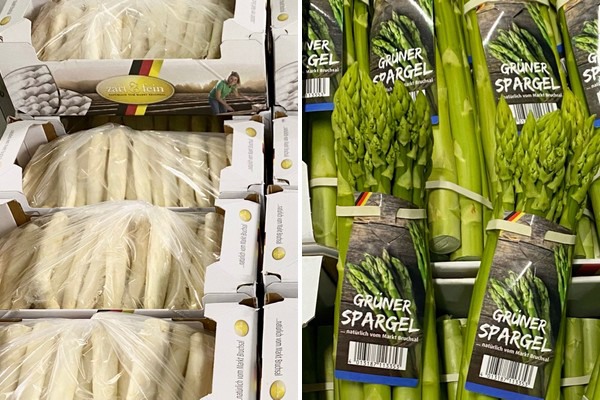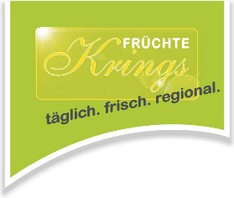As Easter approaches, the classic spring harbingers of domestic cultivation, with asparagus taking the lead, are gradually hitting the market. Easter sales traditionally carry significant weight within the gastronomy sector, says  Matthias Krings. He provides goods and advice to restaurants in the outskirts of Cologne. The goal is to enrich the menu with a wide variety of products, particularly since vegetables are increasingly considered the main attraction on one's plate in fine dining.
Matthias Krings. He provides goods and advice to restaurants in the outskirts of Cologne. The goal is to enrich the menu with a wide variety of products, particularly since vegetables are increasingly considered the main attraction on one's plate in fine dining.
Right: Matthias Krings
For about 15 years now, Krings has been sourcing his German asparagus from OGA-OGV in North Baden. Due to the early Easter and optimal growing conditions, this year's season got off to a relatively early start. "In week 12, we already received the first volumes. The price is relatively high at the beginning of the season, although kilo prices below 20 EUR for top-quality asparagus are still acceptable. This is also reflected in the high demand from the gastronomy sector." In addition, Krings trades with Dutch produce as well as asparagus from the surrounding Rhineland.
 The Italian strawberry season is gradually coming to an end, while Dutch greenhouse goods are picking up pace. German wild garlic has also been offered since week 10.
The Italian strawberry season is gradually coming to an end, while Dutch greenhouse goods are picking up pace. German wild garlic has also been offered since week 10.
At the beginning of week 12, Krings was also able to offer the first green asparagus from North Baden. Krings: "Interestingly, asparagus is gaining importance outside of the local season, especially in fine dining. Despite very high prices up to 80-90 EUR/carton, we have been able to sell imported asparagus from Mexico and Peru throughout the winter." He points out the high importance of vegetables in Michelin star-level gastronomy.
"We have been observing a trend in vegetables for some time now, moving away from being a side dish to becoming the main attraction on the plate. There is an increasing and conscious decision for a more vegetable-oriented rather than meat- and fish-heavy cuisine. If the 30-40 EUR fillet is omitted, some excellent vegetables can be used instead. This is more complex and demanding for the chef, but at the same time, it also opens up many new possibilities."

Baden white and green asparagus from OGA-OGV.
Shaking up things on people's plates
This trend benefits not only asparagus, but Asian and Italian vegetable specialties as well. Regional producers have also recognized this trend, Krings observes. "For example, we are working with a producer from the Bielefeld area who carries a very wide range of tomatoes. We're talking about 40-50 different varieties. The same applies to cresses and microgreens: This remains an important topic in fine dining, although the significant cost increases in this segment are very noticeable. Until a few years ago, we delivered crates of goods from Koppert Cress around Easter, but that's a thing of the past. Meanwhile, regional cress producers are coming on very strong. This is something we would naturally like to support."
The significance of the Easter business remains considerable, Krings continues. "Easter and Pentecost are the quintessential days for restaurateurs, although the business is a bit different now. The sales volumes are no longer huge, which is certainly partially due to staff shortages in the gastronomy sector. However, there is an increasing effort to create more quality, shaking up things on people's plates. For many chefs, the Easter holidays continue to be a kind of benchmark, where they aim to offer spring goods. This means that for them and us, some important days are coming."
Images: Früchte Kring e.K.

For more information:
Matthias Krings
Früchte Krings e.K.
Friedrichstr. 63
D – 42929 Wermelskirchen
Tel.: +49 (0) 2196 / 72 555 – 0
Fax: +49 (0) 2196 / 72 555 – 29
Email: [email protected]
www.fruechtekrings.de
